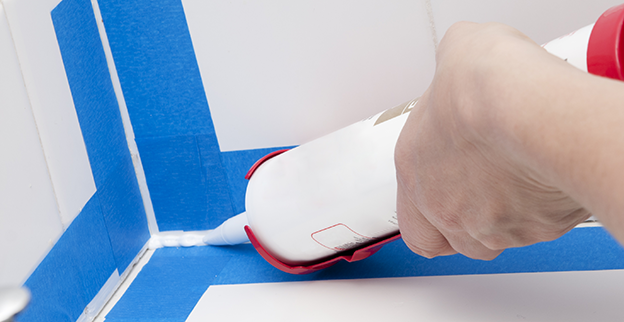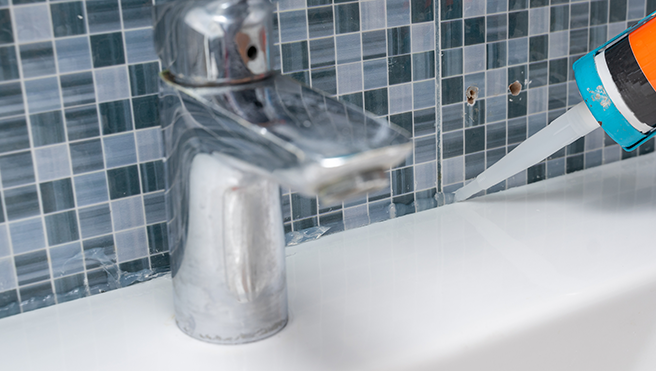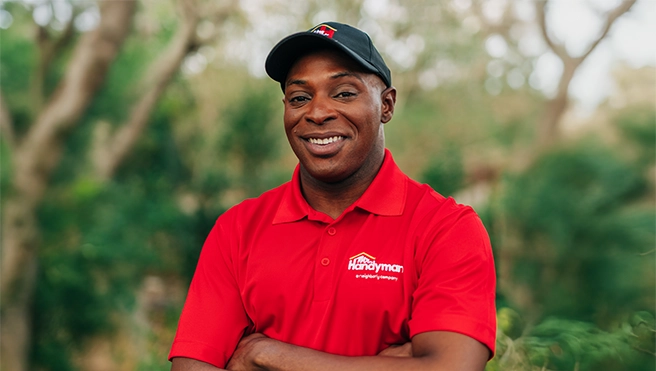Caulking is a type of sealant used for filling small spaces around your home. Depending on the type, it can be used on your home’s exterior surfaces or interior surfaces. Though it’s a simple product that doesn’t make a big impact on the appearance of your home or take a lot of time to apply, the difference that caulking can make is pretty monumental. Caulking has two primary functions—keeping out water, and keeping out air.
Some of the areas you might want to use sealant for these purposes include:
- Windows. You might not think that a small gap you can’t even really see around your window frame or panes of glass would make a difference to your energy costs, but you’d be wrong. Air leaks are a major contributor to high energy bills. Dried-out caulking is just one of several warning signs you need Charleston window repair.
- Doors. Like windows, small gaps around door frames can cause a surprising amount of air to escape. The sealant also prevents water from entering these gaps and causing wood rot.
- Bathrooms. Your bathroom is regularly exposed to water. Even if you think the water is contained in your sink, bathtub, or shower, it’s important to seal every single gap within your bathroom. This includes joints between tile flooring and the wall and joints between the bathtub or shower and the floor and wall.
- Kitchens. There’s a fair amount of potential for water damage and leaks in the kitchen, too. The most important area to seal is right around where your sink meets your countertop, but the area between your countertop and wall should also be sealed.
In addition to protecting your home against air leaks and water damage, caulking can be used to pull together an installation or repair, making it look fully finished. For example, though you don’t technically ‘need’ to seal the joint between your baseboards and wall, filling this gap will make the installation look much more seamless and professional.
If you’ve been thinking about looking into home improvements to increase your home’s energy efficiency, caulking is a great first step. Exterior caulking projects are a great way to reduce your energy costs in the summer and winter. Plus, who doesn’t want to help out the environment by being an energy saver?
Our Services for Caulking in Charleston
Because caulking can refer to many different products and projects, many of our customers who are interested in this service ask us what exactly we do. The answer is simple—pretty much everything! We encourage you to call our office at 843-891-3371 to discuss the specifics of your project but to give you a better idea, we’ve included some of the types of caulking and the sealing process we use below.
Popular Types Of Caulking
There are so many different types of caulk that it would be difficult to create an exhaustive list. Here, we’ve included the most common types of sealants we use during our Charleston caulking service, as well as their primary uses.
- Latex. Thanks to its ease of application, this is the most popular product for homeowners who choose to take on a caulking project on their own. Because it can be painted over, it works great in indoor spaces. However, acrylic latex caulk is quite susceptible to drying out and breaking down when exposed to sunlight, so it’s best kept away from windows.
- Silicone. Silicone tends to hold up better than latex, but not all types can be painted. It’s also more challenging to apply due to its rigidity.
- Exterior. This product is designed to be moisture-resistant and hold up against harsh UV rays, making it a great window sealant and dry caulk.
- Gutter. If your gutter system currently has holes and gaps that are reducing its effectiveness, gutter caulk can solve this problem temporarily.
- Mildew-resistant. The primary choice for bathrooms, which tend to be even more humid than other rooms in a Charleston home.
- Roof. A leaky roof will need partial or full replacement at some point, but if you’re still in the process of saving up, this product can side you over.
- Molding. Any type of molding or trim work is pulled together using this product.
- Fire-retardant. This non-combustible product is used by professionals around wiring, HVAC ducts, and pipes.
The Caulking Process
The process we follow for our caulking service varies depending on whether we’re doing a repair or finishing off an installation, as well as the location of the project. Nonetheless, you can expect our caulking process to look something like this:
Surface preparation. The key to making a caulking job last as long as possible is preparing a clean surface. To clean the surface, we’ll use a cleanser and disinfectant such as mineral spirits. Depending on the product used, we may use water to remove any remaining cleaner residue. Before cleansing the surface, we’ll also remove any old excess caulk with a putty knife, utility knife, or razor blade. Our handyman professionals use many of their own tools, so it’ll just depend on what your service technician has on hand!
Caulking application. There are two main ways caulking can be applied—using a squeeze caulk tube or a caulking gun. While holding the squeeze tube or caulk gun at a 45-degree angle, we’ll draw a bead of caulk from one end of the surface to the other. This requires a controlled, steady hand to do properly. Then, using a caulk finishing tool, we’ll smooth the caulk bead so that it’s flush with the joint. Don’t be alarmed if you see your service technician using their finger for this step—this is perfectly normal! Some of our team members feel they have more control using their fingers, while others prefer to use caulking tools. Either way, you can trust that your technician is doing what they need to do to produce high-quality results.






